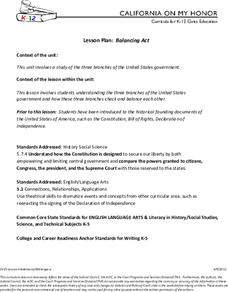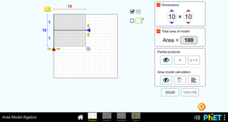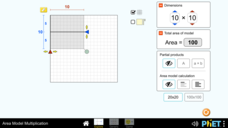Baylor College
People and Climate
Model how the sun's energy strikes the planet and help your class relate it to a climate map. Assign small groups an individual climate zone to discuss. They reflect on and research how humans survive in the assigned climate and write a...
Baylor College
Finding the Carbon in Sugar
In session one, demonstrate for your class how a flame eventually goes out when enclosed in a jar in order to teach that oxygen is required for combustion. In session two, class members then burn sugar in a spoon to observe how it...
University of Minnesota
Neuropathfinding: Kinesthetic Model
Playing follow the leader has never been so interesting! Get the class up and moving while they take on the roles of nervous system components. Through trial and error, they learn the importance of the "pioneer" growth cone that leads...
Curated OER
Mirror Image
Why does practice make perfect? Give your class insight into procedural memory, where we learn to do new things — then continue to improve through repetition. By attempting to draw shapes while looking in a mirror, learners observe their...
Bonneville
Where Does Energy Go?
Convection currents aren't just a bunch of hot air. The second of five lessons in the Solar Updraft Towers unit focuses on energy transfer and convection currents. Young scientists watch six demonstrations that illustrate how warm air...
EngageNY
Final Performance Task: Delivering an Opinion Speech with Multimedia Display
Welcome to the grand finale! Scholars practice reading their speeches to a partner and make last-minute changes based on feedback. Pupils then present their final opinion speeches to their small groups and show off their work in a...
NASA
Whip Up a Moon-Like Crater
The moon is famous for its craters, but they haven't always been there. Young learners experiment with materials to simulate the creation of moon craters. Pupils are able to see patterns in their materials that are similar to the...
EngageNY
Final Performance Task: Presenting Graphic Novelettes
Let's get graphic. Serving as the final performance task of the unit, scholars complete their graphic novelettes and design covers based on their sketches. Finally, they present their hard work to classmates.
EngageNY
Peer Critique and Revision: Storyboard, Sections 1-4
Teamwork makes the dream work. Pupils participate in a peer critique process, using forms to offer constructive advice about each other's storyboards. Next, scholars revise their storyboards based on the feedback, and then share their...
Judicial Branch of California
Balancing Act: The Three Branches
What do hula hoops and the American system of government have in common? Using hands-on station activities, pupils consider the roles of the three branches of government. A script for teachers and writing prompts help round out a...
EngageNY
Performance Task: Readers Theater Second Rehearsal and Performance
Prepare, practice, perform. Using the resource, actors first revise their conclusions for their readers theater scripts. Then, groups perform their scripts in front of the class, while peers evaluate each performance using a rubric.
Museum of Science
Create Gas
Let's have a gas. Individuals mix baking soda and vinegar in a bottle. Learners view the interaction between the solid and the liquid and notice that a gas is formed. Scholars notice the gas inflates a balloon stretched across the mouth...
Museum of Science
Cup Drop
Create egg drop soup. Teachers first set up eggs that are held up above cups of water with a piece of cardboard and cardboard tubes. Learners try to determine a way to get the eggs to drop into the cups. Using a broom, the instructor...
University of Waikato
Observing Water's Thin 'Skin'
Keep the tension up in the classroom. The class first observes as the teacher creates a dome of water above a glass by adding paperclips into an already full glass. Classmates then work in pairs to see how many drops of water can fit...
University of Waikato
Water Runoff
Teachers demonstrate water runoff on a hill and its effect on soil erosion. Pupils observe as the instructor changes the steepness of the hill and see whether vegetation covers the soil. Learners then use their observations to make...
National Wildlife Federation
Water, Water Everywhere?
Visibly display the location of the water in the world. Using 12 liters of water to represent the total amount of water in the world, the class measures out the water located in different areas, such as the ocean and ice caps. Class...
National Woman's History Museum
Getting with the Program
A seven-step instructional activity introduces the emergence of computer sciences and the contributions women made to the profession after World War II. Several science experiments offer pupils a hands-on learning experience that...
Space Awareness
Continental Climate and Oceanic Climate
There's nothing better than a cool breeze blowing in from the ocean. Scholars explore how water affects change in temperature using a hands-on experiment on climate. They use measurement tools to compare the continental and oceanic...
Space Awareness
Seasons Around the World
Why does Earth experience summer, fall, winter, and spring? Using an informative demonstration, learners see how the angle of the sun on Earth and the rotation of Earth determine the seasons. Scholars work in pairs to learn that the...
Space Awareness
Making A Sundial
Can people really measure time just by using the sun? Scholars venture outside on a nice, sunny day to build sundials and learn how people measured time 600 years ago. The class builds two different sundials while gaining practice with...
Steve Spangler Science
Boo Bubbles Bouncing Smoke – Dry Ice Bubbles Experiment
Don't let your lesson plans go up in smoke—unless they include Boo Bubbles, of course! An engaging laboratory mixes liquid soap and dry ice to create smoky bubbles that burst on impact, making it the perfect way to celebrate Halloween in...
PHET
Area Model Decimals
Area works with decimals too. Pupils use the interactive to model multiplication of two decimals using an area model. They see how the decomposed components of the factors obtain partial products and then the complete product. Using area...
PHET
Area Model Algebra
Expand the pupils knowledge of using area models to algebra. The interactive allows learners to use the same procedure of getting partial products when multiplying multi-digit numbers to multiplying polynomials. Scholars see how the...
PHET
Area Model Multiplication
Develop a solid understanding of multiplication. The interactive provides opportunities for learners to continue building a deep understanding of multiplication. Pupils use the application to find the product of two numbers and find...

























